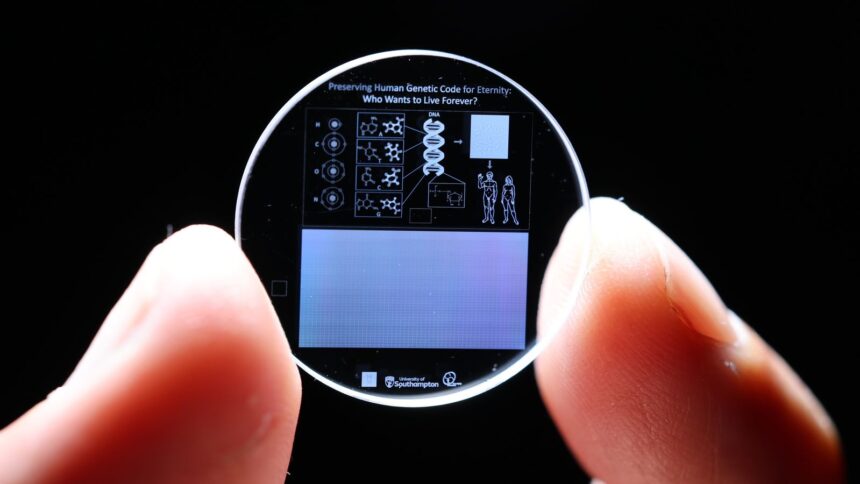The data was inscribed on a 5D crystal by a team from the Optoelectronics Research Centre (ORC) at the University of Southampton using lasers. The team claims that this crystal can endure for billions of years.
It doesn’t deteriorate over time like other storage formats do.
The university called the crystal, which is the same as fused quartz, one of the most “chemically and thermally durable materials on Earth” in a statement.
Extreme temperatures, tremendous forces, and “exposure to cosmic radiation” are all things it can survive.
The Southampton team, under the direction of Professor Peter Kazansky, imprinted information about the human genome—that is, the complete set of DNA instructions existing in a cell—using incredibly rapid lasers.
An official from the institution stated: “This encoding method uses two optical dimensions and three spatial coordinates to write throughout the material – hence the ‘5D’ in its name.” This is in contrast to marking solely on the surface of a 2D piece of paper or magnetic tape.
The researchers anticipate using it in the future to catalog the genomes of threatened plant and animal species.







